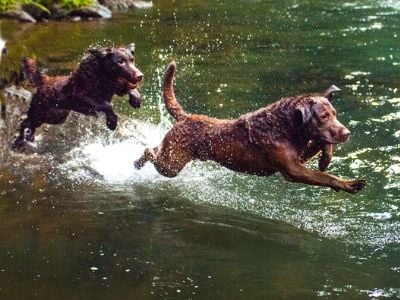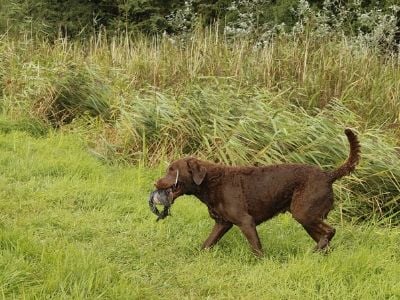Chesapeake Bay Retrievers - Origin, Purpose And Conformation
Posted on

The powerful Chesapeake Bay retriever is undoubtedly a handsome dog, but where did this double-coated breed originate, and why was it created?
The Chesapeake Bay retriever was conceived in America during the 19th century. This was a breed developed out of necessity by duck hunters based on the unique topography of the Chesapeake Bay. The bay is a huge 200-mile stretch, surrounded by Maryland, Virginia and Delaware, with shallow, frigid water. During the winter months, this estuary is used by thousands of duck and geese as a flight path and temporary stop-over on their long journey south. The hunters needed a dog that could cope with these freezing waters and would be powerful enough to withstand the choppy waves and forge a path through the forming ice, whilst carrying their shot quarry.
It is believed that they were created over generations by crossing Newfoundlands with Irish water spaniels and other unknown breeds. The breed was known as the ‘Red Chester’ and the ‘Brown Winchester’ before gaining the title of ‘Chesapeake Bay retriever’ that is used around the globe today.

The thick, oily double coat of this working dog was paramount for keeping him warm and keeping water away from his skin, whilst his webbed feet, derived from the Newfoundland, help propel him through the water with minimal effort.
Chesapeake Bay retrievers are solid in colour; either brown, ‘sedge’ or ‘deadgrass’, with a range of shades in each colour being acceptable. A medium-sized, yet muscular dog, the average ‘Chessie’ in peak working condition will weigh approximately 32kg (male) or 28kg (female).
These beautiful, yet headstrong gundogs, are instinctively protective of their family unit and have been put to use as watchdogs, scent dogs and, their fabulous amber eyes and wavy coat also set them in good stead in the show ring.
Related Articles:
Are Young Gundogs Being Pushed Too Hard Too Early?
Canine Elbow Dysplasia: X-Raying May Not Be The Answer - Guest Vet Blog
TP Feeds Grain Free Duck
Health Problems In French Bulldogs: The Worst Is Yet To Come

Add a comment: